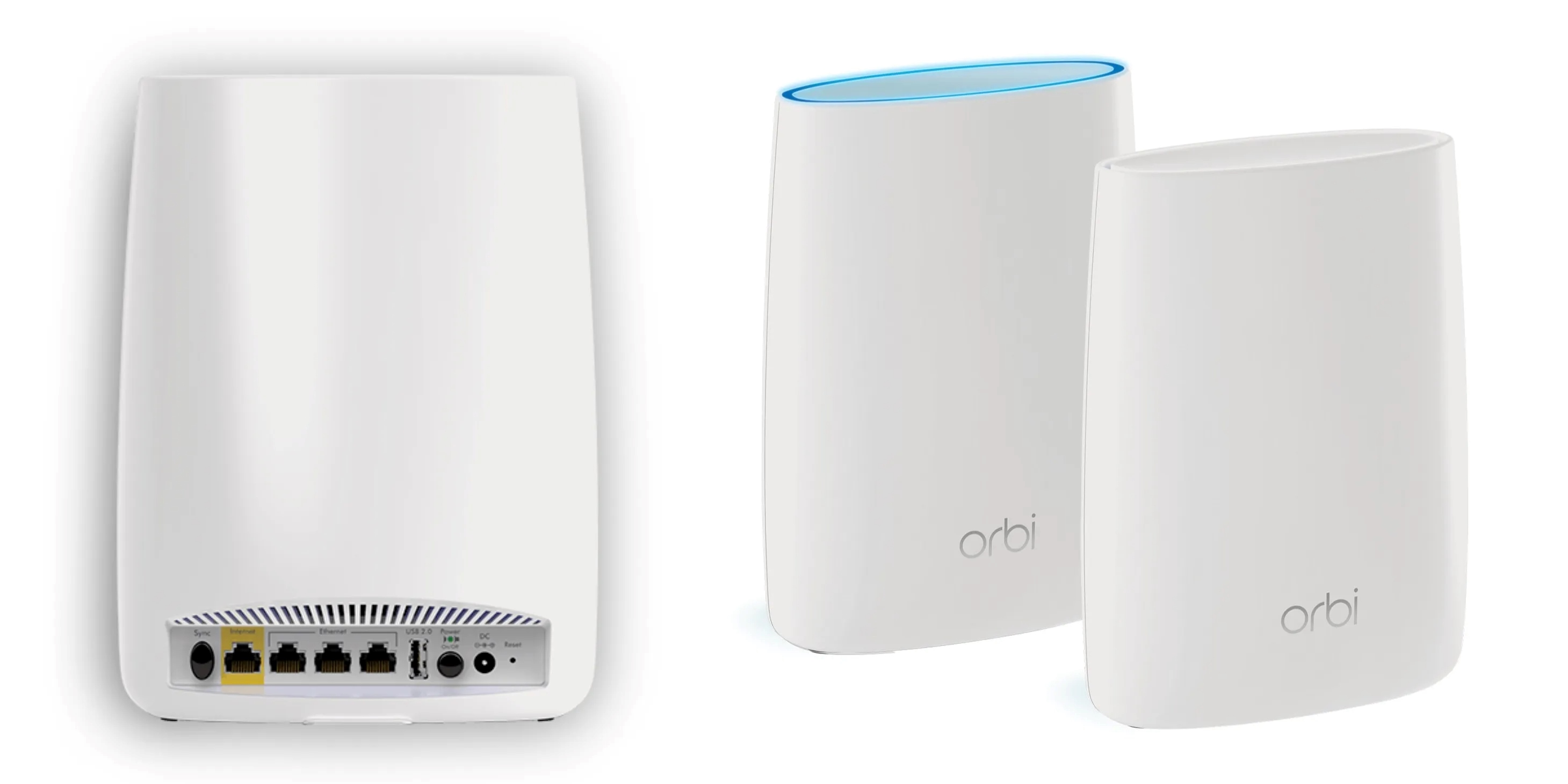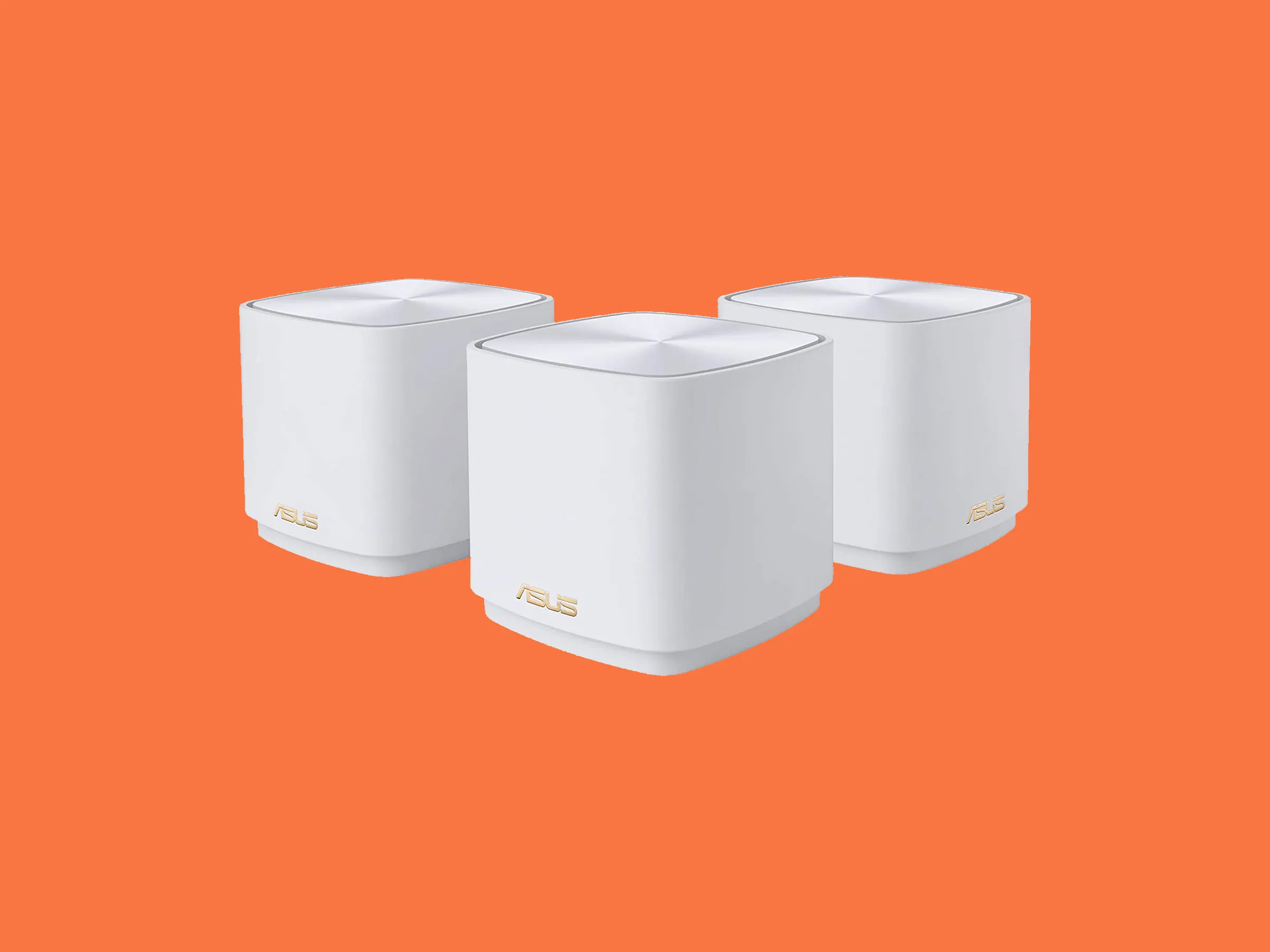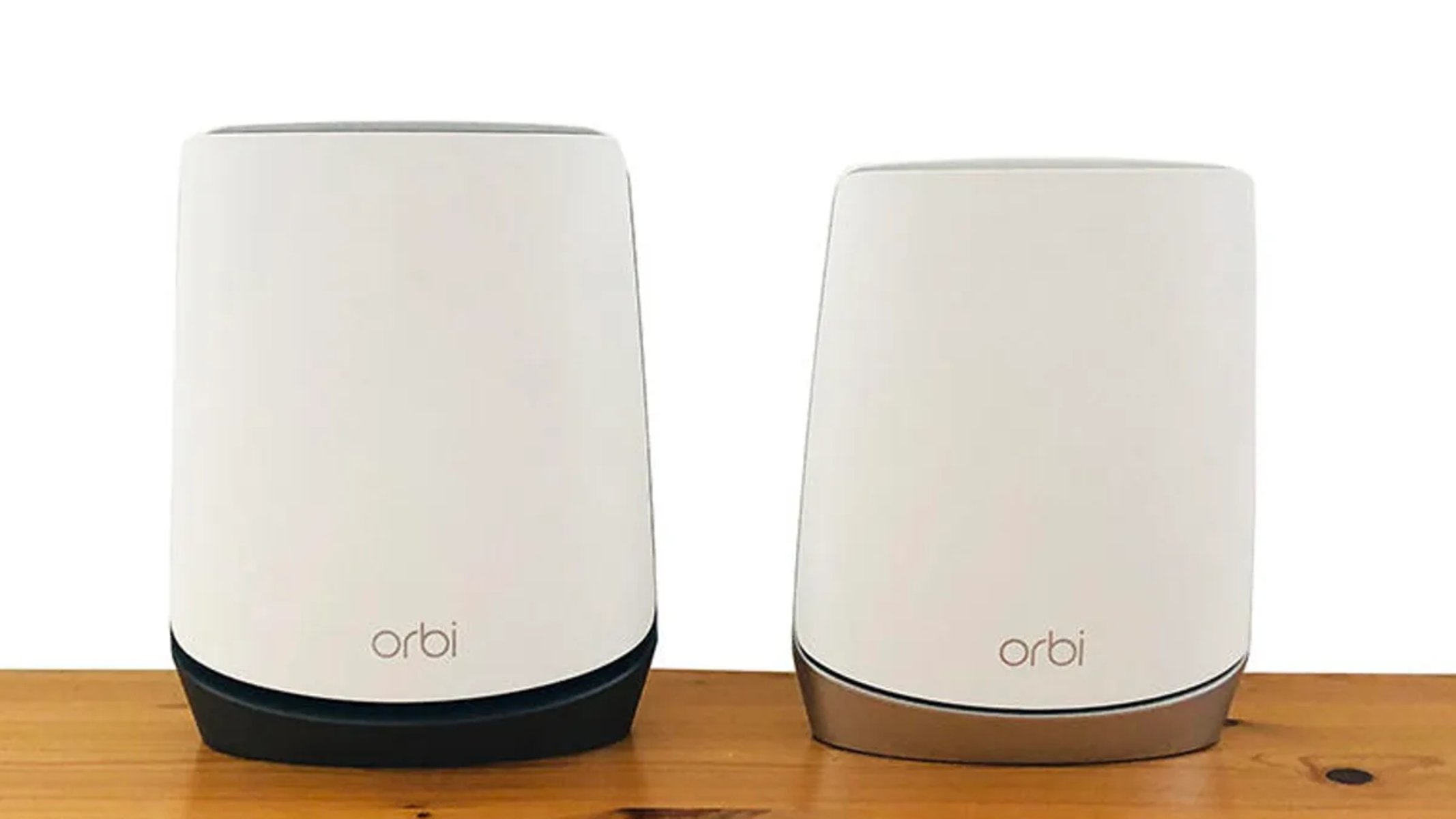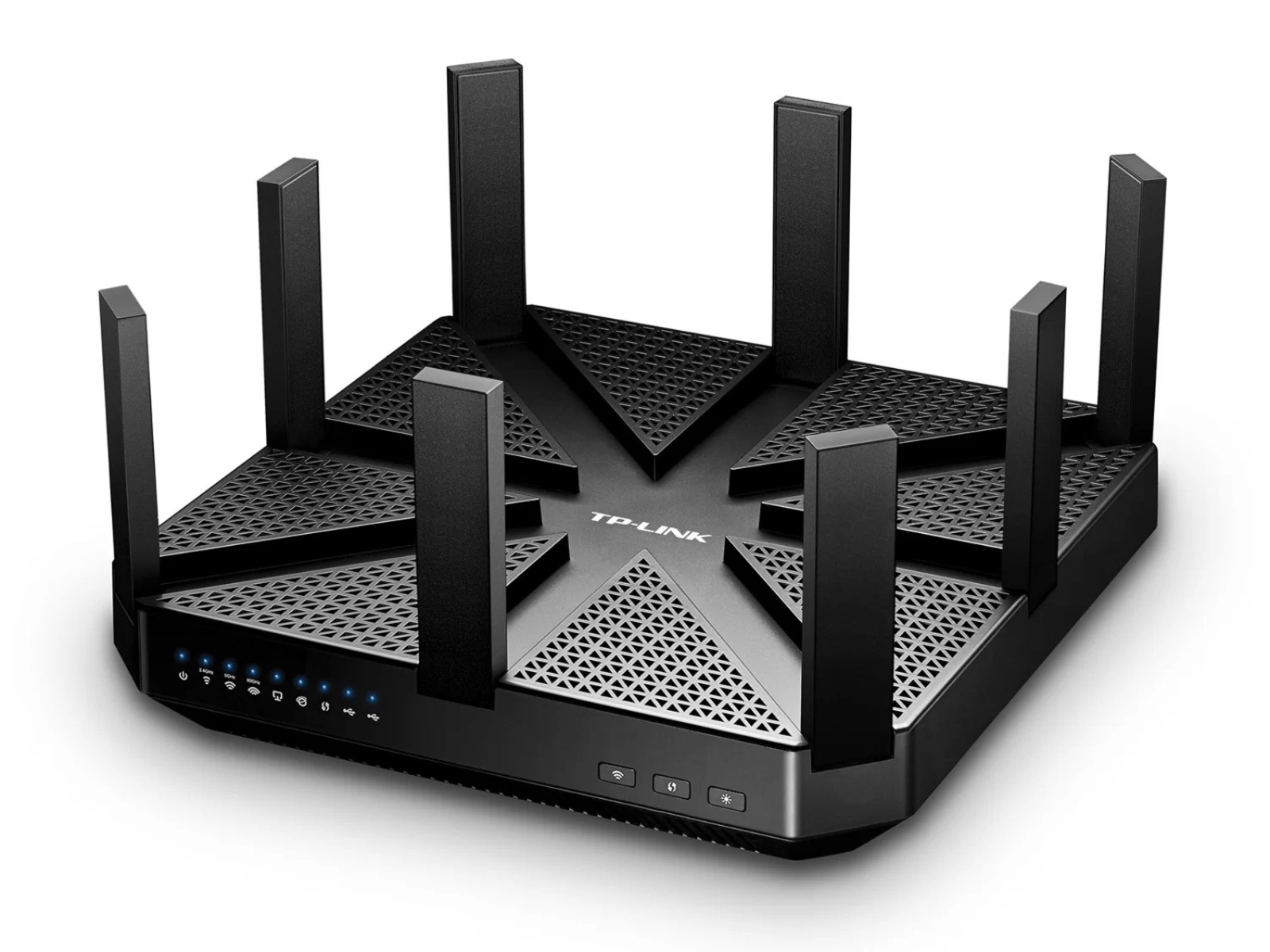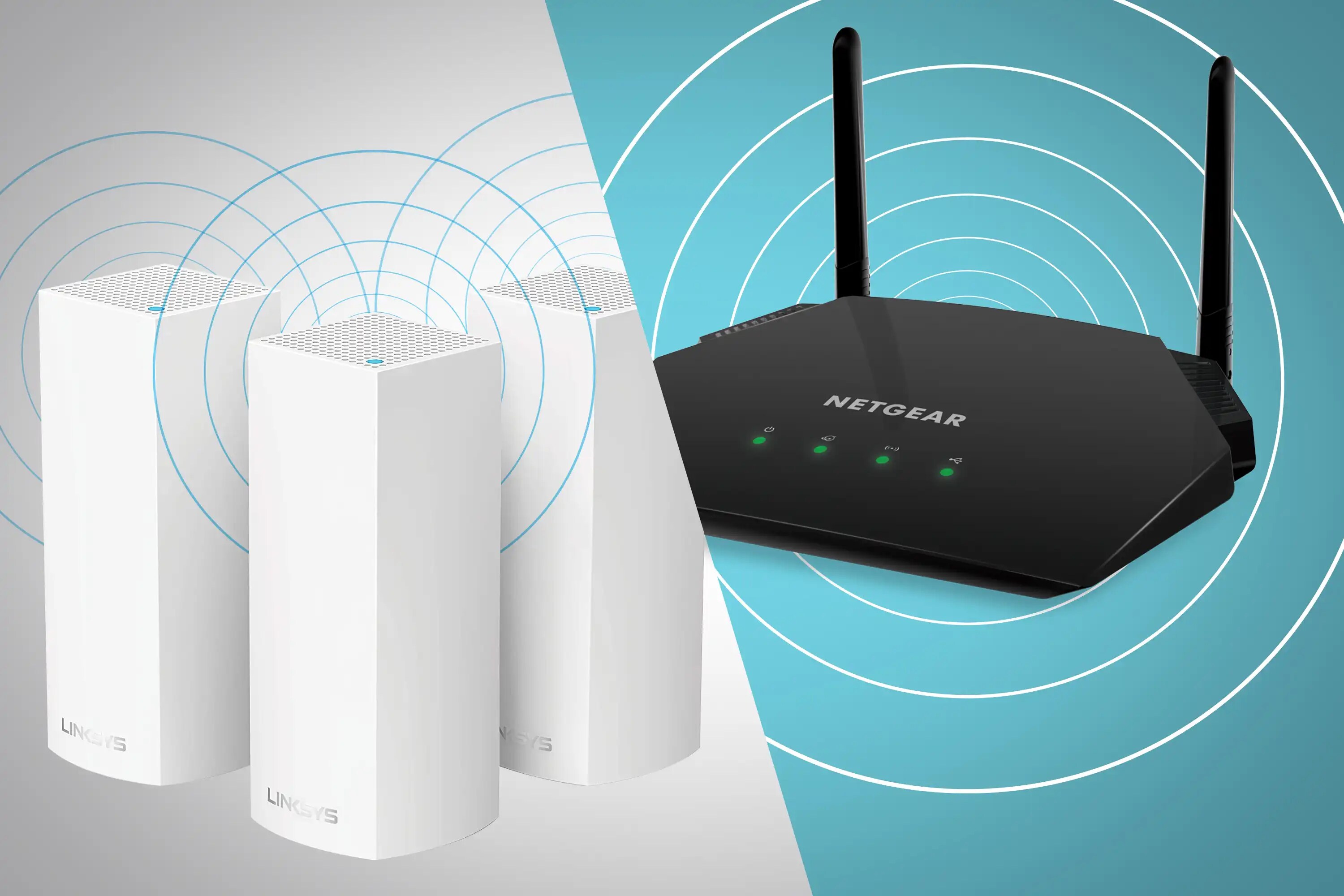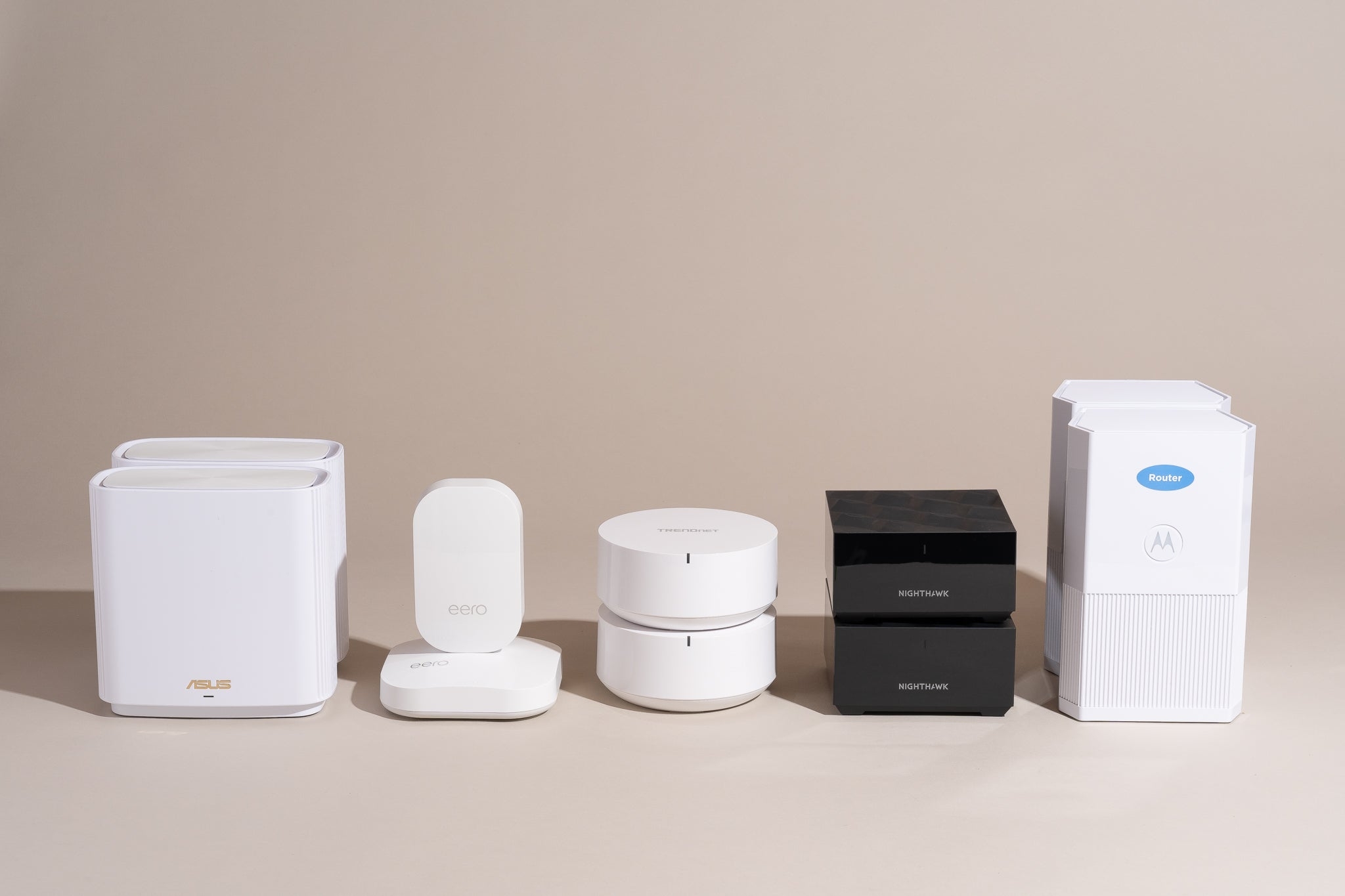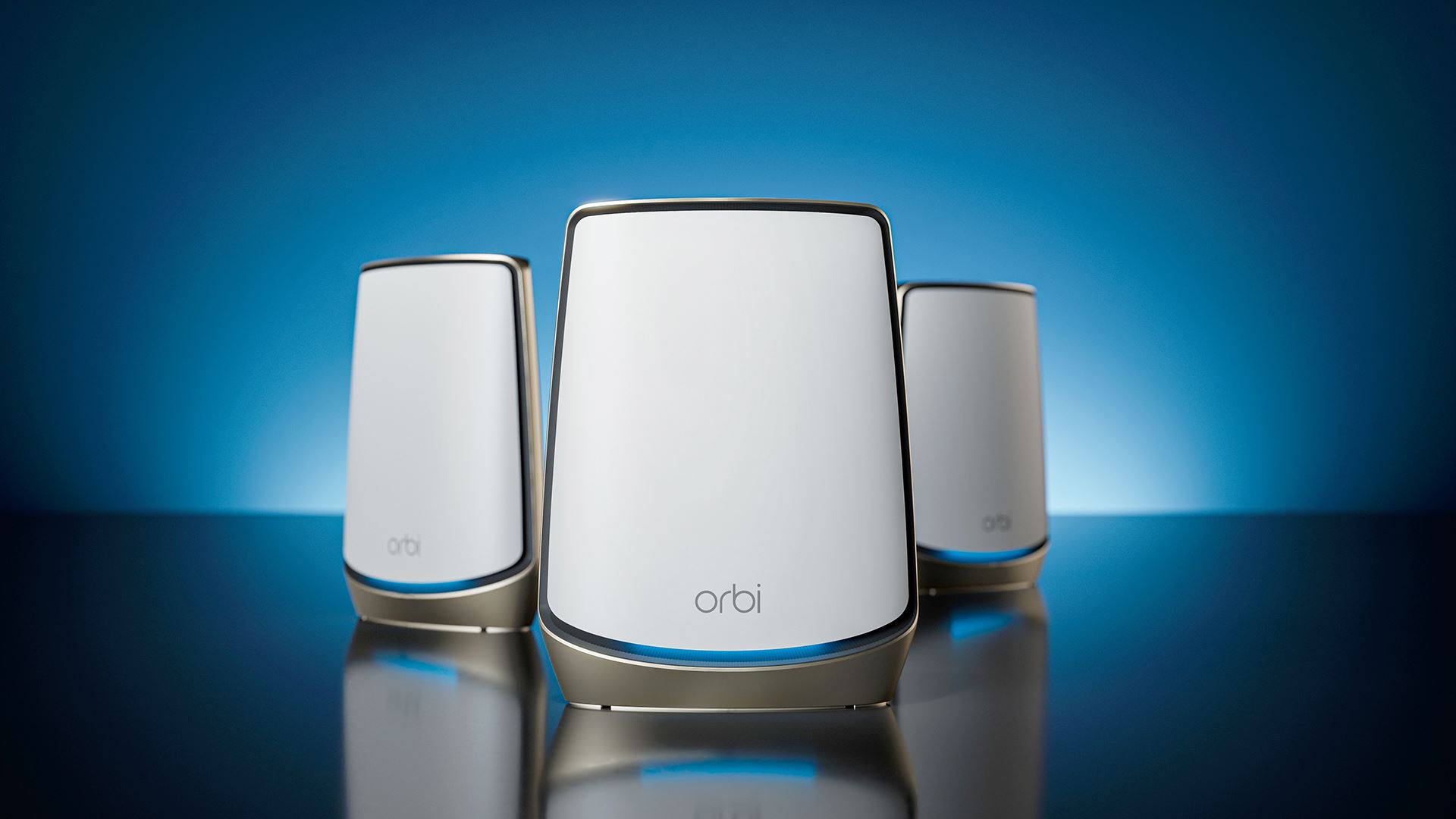Introduction
Welcome to this guide on how to tell if your Orbi is using Ethernet Backhaul. When it comes to setting up a reliable and high-performing network, Netgear Orbi is a popular choice for many users. One of the advanced features of the Orbi system is Ethernet Backhaul, which offers even faster and more stable connections between the Orbi router and satellite units.
If you are wondering what Ethernet Backhaul is and why it’s beneficial for your Orbi setup, you’re in the right place. In this article, we will explain the basics of Ethernet Backhaul and guide you through the steps to determine if your Orbi system is using this feature.
Before we dive into the methods, let’s briefly define Ethernet Backhaul. In a traditional Orbi setup, the router connects to the satellite unit wirelessly, utilizing a dedicated wireless backhaul channel to efficiently transmit data. However, Ethernet Backhaul takes it one step further by establishing the connection between the router and satellite via wired Ethernet cables.
Using Ethernet Backhaul offers several advantages. First and foremost, it boosts network performance by providing a dedicated and stable connection between the router and satellite, minimizing interference and latency issues. This is especially beneficial in larger homes or offices with multiple floors or thick walls that can attenuate wireless signals.
Secondly, Ethernet Backhaul allows for faster data transfer speeds since wired connections are generally more reliable and capable of handling larger bandwidths. This is particularly important for bandwidth-intensive activities such as online gaming, video streaming, or file transfers.
Lastly, Ethernet Backhaul can offload some of the network load from the wireless backhaul channel, which can improve the overall network capacity and performance.
Now that you understand the benefits of Ethernet Backhaul, let’s proceed to the methods that will help you determine if your Orbi system is utilizing this feature. By following these steps, you can confirm if Ethernet Backhaul is enabled and enjoy the full potential of your Orbi network.
What is Ethernet Backhaul?
Ethernet Backhaul is a feature that enhances the performance and reliability of your Orbi mesh network by establishing a wired connection between the Orbi router and satellite units. In a traditional mesh network setup, the Orbi router and satellite units communicate wirelessly, using a dedicated wireless backhaul channel to transmit data between them. However, with Ethernet Backhaul, the connection is established via Ethernet cables.
So, what does this mean for your network? Essentially, Ethernet Backhaul provides a more stable and robust connection between the router and satellite units, resulting in better overall network performance. By utilizing Ethernet cables, the Orbi system can bypass potential wireless interference and maintain consistent high-speed data transfer rates.
When Ethernet Backhaul is enabled, the Orbi router and satellite units are directly connected to your home’s network via Ethernet cables. This eliminates the need for data to be transmitted wirelessly between the units, reducing latency, improving signal strength, and minimizing the impact of external factors that can impact wireless performance.
Additionally, Ethernet Backhaul increases the network capacity and allows for faster data transfer speeds. Since Ethernet cables are capable of handling larger bandwidths than wireless connections, you can expect improved speeds and reduced lag when performing bandwidth-intensive tasks such as streaming 4K videos, online gaming, or transferring large files.
It’s important to note that in order to utilize Ethernet Backhaul, you will need to have Ethernet ports available near your Orbi router and satellite units. This may require some additional setup, such as running Ethernet cables through your home or office. However, the benefits of Ethernet Backhaul outweigh the extra effort, especially if you have a larger space or experience issues with wireless connectivity due to interference or distance.
In summary, Ethernet Backhaul is a feature that enhances the performance and reliability of your Orbi mesh network by establishing a wired connection between the router and satellite units. By utilizing Ethernet cables, it provides a more stable, robust, and high-speed connection, resulting in improved overall network performance. If you want to take full advantage of your Orbi network and experience seamless connectivity throughout your home or office, enabling Ethernet Backhaul is definitely worth considering.
Why use Ethernet Backhaul with Orbi?
Ethernet Backhaul offers several compelling benefits that make it a worthwhile option for maximizing the performance of your Orbi mesh network. Let’s explore why you should consider using Ethernet Backhaul with your Orbi system:
1. Enhanced Stability: By establishing a wired connection between the Orbi router and satellite units, Ethernet Backhaul eliminates the potential for wireless interference that can affect signal strength and stability. This is particularly beneficial in larger homes or offices with multiple floors or thick walls, where wireless signals may be attenuated. With Ethernet Backhaul, you can enjoy a more reliable and consistent connection throughout your entire space.
2. Increased Performance: Ethernet Backhaul allows for faster data transfer speeds compared to a traditional wireless backhaul. Wired connections are generally more reliable and capable of handling larger bandwidths. This means you can experience improved speeds and reduced latency when performing bandwidth-intensive activities such as streaming high-definition videos, gaming online, or transferring large files. Ethernet Backhaul ensures that your Orbi network can handle the demands of modern digital lifestyles.
3. Minimized Latency: Latency, commonly referred to as lag, can be a frustrating experience when using a wireless connection. Ethernet Backhaul significantly reduces latency since data is transmitted via the wired Ethernet cables with minimal delay. This is crucial for online gaming or real-time applications where even small delays can have a noticeable impact on performance. With Ethernet Backhaul, you can enjoy a more responsive and lag-free online experience.
4. Offloaded Network Load: By utilizing Ethernet Backhaul, the Orbi system can offload some of the network load from the wireless backhaul channel. This can help improve the overall network capacity and performance, especially in environments where multiple devices are connected simultaneously. By reducing the strain on the wireless network, Ethernet Backhaul ensures a smoother and more efficient network experience for all connected devices.
5. Easy Setup: Setting up Ethernet Backhaul with your Orbi system is relatively straightforward. If you already have Ethernet ports available near your Orbi router and satellite units, all you need to do is connect them with Ethernet cables. This can typically be done by following the instructions provided by Netgear or consulting the user manual for your specific Orbi model. Once the Ethernet Backhaul is enabled, your Orbi system will automatically detect and utilize the wired connection, optimizing the network performance.
In summary, using Ethernet Backhaul with your Orbi system offers enhanced stability, increased performance, minimized latency, offloaded network load, and easy setup. Whether you have a larger home or office with challenging wireless conditions or simply want the best possible network performance, enabling Ethernet Backhaul is a smart choice. It ensures that your Orbi mesh network delivers seamless connectivity, faster speeds, and a superior overall user experience.
Steps to tell if Orbi is using Ethernet Backhaul
If you want to verify whether your Orbi system is utilizing Ethernet Backhaul, there are several methods you can follow. Let’s explore the steps to determine if your Orbi is using Ethernet Backhaul:
Method 1: Checking the Orbi router and satellite connection:
- Locate your Orbi router and satellite units and ensure that they are connected using Ethernet cables.
- Check the back of your Orbi router and satellite units for the presence of Ethernet cables connected to the LAN or Ethernet ports.
- If you notice Ethernet cables connected to both the router and satellite units, it indicates that Ethernet Backhaul is enabled.
Method 2: Using the Orbi app or web interface to check the connection:
- Make sure that your smartphone or computer is connected to the same network as your Orbi system.
- Open the Orbi app on your smartphone or access the Orbi web interface on your computer.
- Navigate to the settings or network section of the app or web interface.
- Look for a section or option related to “Backhaul” or “Connection” status.
- If you see a confirmation or indication that Ethernet Backhaul is enabled or connected, it means your Orbi system is utilizing Ethernet Backhaul.
Method 3: Checking the LED indicators on the Orbi devices:
- Inspect the LEDs on your Orbi router and satellite units.
- If the LEDs corresponding to the connected Ethernet ports on both the router and satellite units are illuminated, it suggests that Ethernet Backhaul is being used.
- Refer to the user manual or documentation for your specific Orbi model to determine the meaning of the LED indicators.
By following these steps, you can determine if your Orbi system is using Ethernet Backhaul. Remember to check the physical connections, utilize the Orbi app or web interface, and observe the LED indicators on the devices. If any of these methods indicate that Ethernet Backhaul is enabled, you can rest assured that your Orbi system is utilizing this feature to optimize your network performance.
Method 1: Checking the Orbi router and satellite connection
One way to determine if your Orbi system is utilizing Ethernet Backhaul is by checking the physical connections between the Orbi router and satellite units. Here is a step-by-step guide on how to check the Orbi router and satellite connection:
- Locate your Orbi router and satellite units. Typically, the router is the main unit connected to your modem, while the satellite units extend the Wi-Fi coverage throughout your home or office.
- Inspect the back of your Orbi router and satellite units. Look for the presence of Ethernet cables.
- Check if there are Ethernet cables connected to the LAN or Ethernet ports on both the router and satellite units.
- If you notice Ethernet cables connected to both the Orbi router and satellite units, it indicates that Ethernet Backhaul is enabled.
When Ethernet Backhaul is enabled, the Orbi router and satellite units establish a wired connection via Ethernet cables. This wired connection ensures a more stable and reliable connection compared to a wireless backhaul network.
By physically checking the router and satellite units, you can confirm if Ethernet Backhaul is being utilized in your Orbi system. If Ethernet cables are present and connected to both the router and satellite units, you can be confident that Ethernet Backhaul is enabled.
Please note that if Ethernet Backhaul is not enabled, you will not find Ethernet cables connected to the LAN or Ethernet ports on the router and satellite units. In this case, the Orbi system is using the traditional wireless backhaul for communication between the units.
Verifying the physical connections is a reliable method to determine if Ethernet Backhaul is being utilized in your Orbi system. However, if you are unsure about the connections or need further assistance, you can refer to the user manual or documentation provided by Netgear or seek help from their customer support.
Method 2: Using the Orbi app or web interface to check the connection
An alternative method to determine if your Orbi system is using Ethernet Backhaul is by utilizing the Orbi app or web interface. By accessing the settings or network section of the app or web interface, you can check the connection status and confirm if Ethernet Backhaul is enabled. Here’s a step-by-step guide on how to use the Orbi app or web interface to check the connection:
- Ensure that your smartphone or computer is connected to the same network as your Orbi system.
- Open the Orbi app on your smartphone or access the Orbi web interface on your computer by typing the IP address of your Orbi router into a web browser.
- Navigate to the settings or network section of the app or web interface.
- Look for a section or option related to “Backhaul” or “Connection” status.
- In this section, you should find information indicating whether Ethernet Backhaul is enabled or connected.
Depending on the version of the Orbi app or web interface, the location and wording may slightly vary. However, the option to check the connection status and determine if Ethernet Backhaul is enabled should be available.
If you see a confirmation or indication that Ethernet Backhaul is enabled or connected, it means your Orbi system is utilizing Ethernet Backhaul. This confirms that the Orbi router and satellite units are establishing a wired connection via Ethernet cables for enhanced network performance.
Using the Orbi app or web interface to check the connection status is a convenient and straightforward method. It allows you to verify the Ethernet Backhaul status without physically inspecting the router and satellite units. If you are unsure about accessing the Orbi app or web interface or need further guidance, you can refer to the user manual or online resources provided by Netgear or contact their customer support for assistance.
Method 3: Checking the LED indicators on the Orbi devices
Another way to determine if your Orbi system is utilizing Ethernet Backhaul is by checking the LED indicators on the Orbi router and satellite units. The LED indicators can provide important information about the status of the network and whether Ethernet Backhaul is being used. Here are the steps to check the LED indicators:
- Inspect the LED indicators on your Orbi router and satellite units. They are usually located on the front or top of the devices.
- Look for LED indicators corresponding to the connected Ethernet ports on both the router and satellite units.
- Observe if the LED indicators for the Ethernet ports are illuminated or blinking.
- If the LEDs for the Ethernet ports on both the router and satellite units are lit, it suggests that Ethernet Backhaul is being utilized.
- Refer to the user manual or documentation for your specific Orbi model to determine the meaning of the LED indicators.
The LED indicators on the Orbi devices serve as visual indicators of the network status and connections. When Ethernet Backhaul is enabled, the LED indicators associated with the Ethernet ports will typically light up or blink to indicate an active connection.
By checking the LED indicators, you can quickly determine if Ethernet Backhaul is being used in your Orbi system. If you notice that the LED indicators for the Ethernet ports on both the router and satellite units are illuminated or blinking, it confirms that Ethernet Backhaul is enabled.
However, it’s important to consult the user manual or documentation specific to your Orbi model to understand the exact meaning of the LED indicators. The LED behavior can vary depending on the Orbi model and firmware version.
Checking the LED indicators is a simple and visual method to confirm if Ethernet Backhaul is being utilized in your Orbi system. If you have any questions or need further clarification regarding the LED indicators, you can reach out to Netgear customer support for assistance.
Conclusion
In conclusion, Ethernet Backhaul is a valuable feature that can significantly enhance the performance and reliability of your Orbi mesh network. By establishing a wired connection between the Orbi router and satellite units, Ethernet Backhaul offers advantages such as improved stability, increased performance, minimized latency, and offloaded network load.
Throughout this guide, we have explored various methods to determine if your Orbi system is utilizing Ethernet Backhaul. By checking the physical connections between the router and satellite units, utilizing the Orbi app or web interface, or observing the LED indicators on the devices, you can confirm if Ethernet Backhaul is enabled.
Verifying whether Ethernet Backhaul is being used in your Orbi system is crucial as it ensures a more reliable and high-performing network. With Ethernet Backhaul, you can experience faster data transfer speeds, reduced latency, and improved overall network capacity.
If you find that your Orbi system is not currently using Ethernet Backhaul, you may consider implementing this feature by connecting your Orbi router and satellite units with Ethernet cables. This can be especially beneficial in environments with challenging wireless conditions or high network demands.
Whether you choose to enable Ethernet Backhaul or stick with the traditional wireless backhaul, the Orbi system offers exceptional Wi-Fi coverage and performance. It is important to choose the setup that best suits your specific needs and network requirements.
We hope that this guide has provided you with the necessary information to determine if your Orbi system is using Ethernet Backhaul. Enjoy the benefits of a reliable and high-performing network with your Orbi mesh system!







